Detroit Early Days: The Motor City’s Deep Open Cup Roots
With Detroit City FC causing a major sensation in our current edition, resident historian Charles Cuttone takes a look (way) back at the city’s deep roots in the U.S. Open Cup.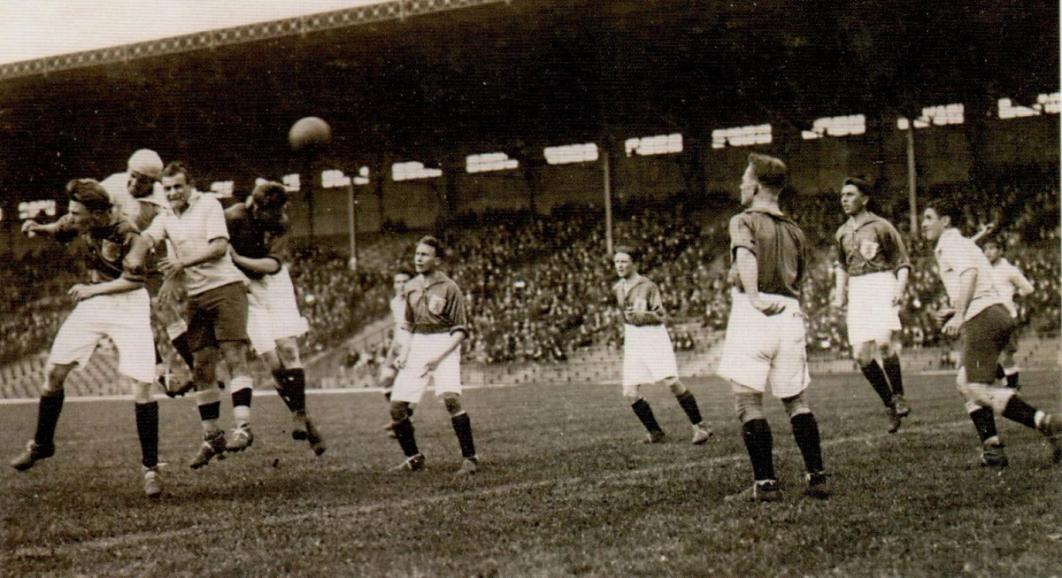

The Michigan State Association was instrumental in the founding of the United States Soccer Football Association (now U.S. Soccer), so Detroit teams, naturally, were part of the very first National Challenge Cup/U.S. Open Cup competition in 1914.
Most of Detroit’s clubs of the time were connected to the city’s burgeoning automotive industry, with Ford, Packard, Buick, Chrysler and Holley Carburetor all fielding teams.
Today in #USOpenCup history... #OTD 1920: Ben Miller SC (#StLouis) defeated Detroit’s Packard FC 4-2 in the Semifinals to become the first Missouri team to reach the Nat'l Challenge Cup Final. 1920 would mark the 1st of 5 straight years where a #Missouri team was represented pic.twitter.com/dw7wh7GiV0
— TheCup.us (@usopencup) April 26, 2023
In the inaugural competition of 1914, Packard FC fell in the First Round to local rivals Roses FC, who then lost to eventual Semifinalist Niagara 2-0 in the Second Round. The Packards went one step past that in 1915, reaching the Third Round.
The 1916 competition proved to be one of epic battles for the Packard team. They played their home games at Packard Park on the grounds of the luxury automaker’s factory complex, not far from Keyworth Stadium, current home of Detroit City FC of the USL Championship, who caused a sensation in this year’s Open Cup with a win over defending champions Houston Dynamo on the road in Texas.
A pair of local derbies were called for in the 1916 Open Cup’s First Round, with St. George’s trouncing the Roses and the Packards facing off against Detroit FC.
It took 35 minutes for the Packards to break the first deadlock, scoring on a twisting shot by Christie that beat Detroit goalkeeper Primeau. Just a few minutes into the second stanza, Smith slipped a shot through the hands of the Detroit goalkeeper to make it 2-0.
🫡, @DetroitCityFC pic.twitter.com/oYIXpCxfc9
— U.S. Open Cup (@opencup) April 17, 2024
Despite the deficit, Detroit charged back. They put up a penalty kick via Clarence Smith and equalized on a header by Shankland. Chris Wharton then gave Detroit a one-goal edge. It seemed over for the automakers until Cook scored with two minutes to go, forcing 30 minutes of extra-time.Both teams had their chances to settle matters, but after two hours, the game ended tangled at 3-3.
A week later at West End Park, the going was easier for the Packards, who advanced with a 2-0 win in the replay (goals by Cook and Smith).
Getting out of the Second Round proved more difficult for the Auto Workers, even with home-field advantage. Jimmy Millar, the veteran who played on Scottish giants Glasgow Rangers first two championship teams and later captained Bradford City in England, gave the Packards a 1-0 lead over St. Georges inside eight minutes. But the visitors equalized before the half and stunned the home crowd when their goalkeeper Gallway stopped a penalty kick by J. Stead in the second half, leaving the game deadlocked 1-1 after 90 minutes. Cook quickly gave the Packards the lead in the first overtime, but James scored his second of the game to pull St. Georges level just before the final whistle.
A week later, at a slippery and wet West End Park, the teams battled for two hours before settling for a scoreless draw. Four hours of soccer were not enough to determine which club would advance to the Open Cup’s Third Round. The teams had to wait three weeks and into the New Year before deciding the affair, as the third contest was postponed twice due to weather and field conditions.
#RangersFC Hall of Fame inductee Jimmy Millar was born on this day in 1934.
— Rangers Football Club (@RangersFC) November 20, 2023
💙 #AlwaysRemembered pic.twitter.com/AqvhUqt9RD
Finally, at the third attempt, the Packards managed a victory. But it wasn’t without a scare, as Allan gave the St. Georges an early second-half lead. The setback energized the Auto Makers, who put on a vicious attack for the rest of the game, forcing Gallway to make save after save. Graham knotted the affair with less than five minutes to go -- and a long angular shot from Mair eluded Galway for the winner.
But, for the second year in a row, Packard’s chances at the national title were derailed in Chicago, again at the hands of the Pullmans, who recorded a 2-0 win on goals by J.C. Cartwright and Mackie.
Despite the early setbacks at the hands of Chicago teams, George Healy, President of the Michigan Soccer Association, and later president of U.S. Soccer, was bullish on the state’s future prospects in his report for the annual Spalding Soccer Guide of 1915-16.
“In the National Challenge Cup Competition our teams have only met with moderate success. Personally, I feel the time is not far distant when Michigan will produce the winner of that splendid trophy that carries with it the championship of the United States,” Healy wrote.
Progress was being made, and in 1919, Roses FC made the Quarterfinals before losing to the Bricklayers of Chicago 5-2. In 1924, Detroit Celtic advanced to the Quarterfinals before losing to the Brickies 1-0.
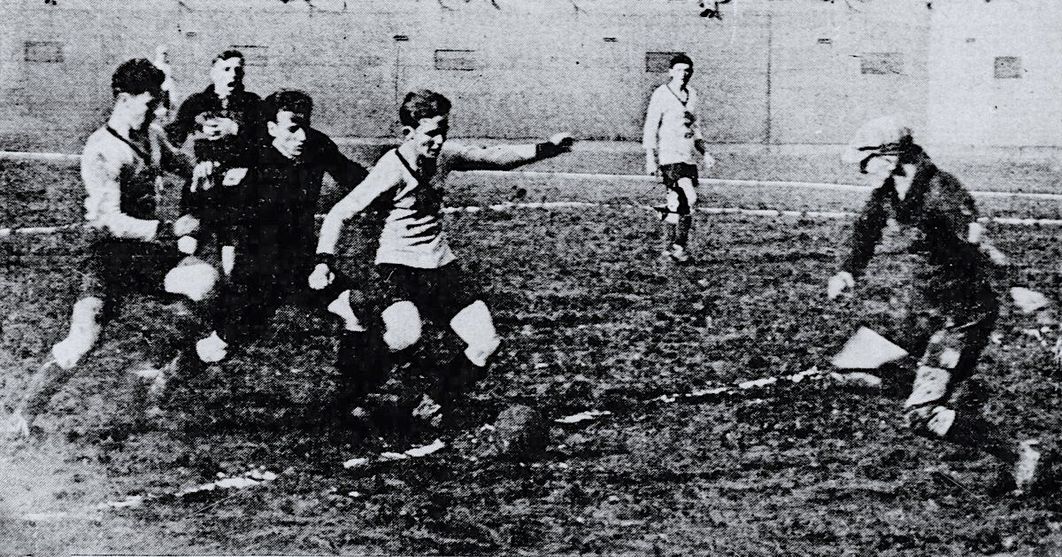
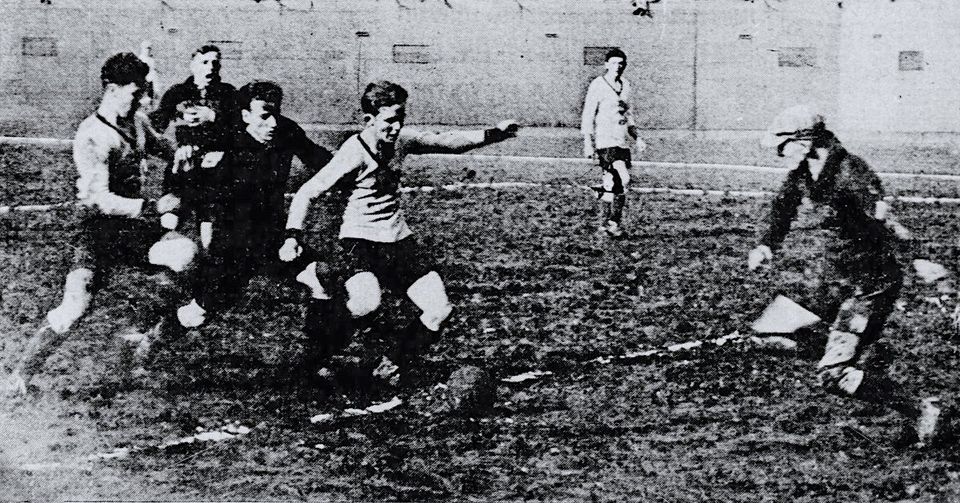
It was more than a decade after Healy’s pronouncement that a Detroit team finally came within grasp of a title. And they got there largely off the foot of one man: Dutch international Gerrit Visser (pictured heading the ball at the Paris Olympic Games of 1924 at the top of this story).
While playing for Stormvogels, the North Holland-born Visser was capped seven times, including four appearances at the 1924 Olympics, where the Dutch lost in the semifinal to Uruguay and finished in fourth place. He emigrated to the United States the following year and joined Bethlehem Steel, where he initially replaced the legendary Archie Stark in their lineup. After only a few appearances with the Steel Men, Visser joined Holley Carburetor and immediately began tearing things up in Detroit.
With 124 teams entered in the 1927 Open Cup, including 21 in the Detroit area, a local qualifying competition was needed. The Holleys had to win five games before advancing to the Tournament Proper. They defeated East End 9-1 in the first contest, and after their second game was called due to darkness, the replay required four extra periods of 15 minutes each before the Carburetors downed the Windsor Sons of Scotland 3-2. Visser scored the winner on a late penalty kick.
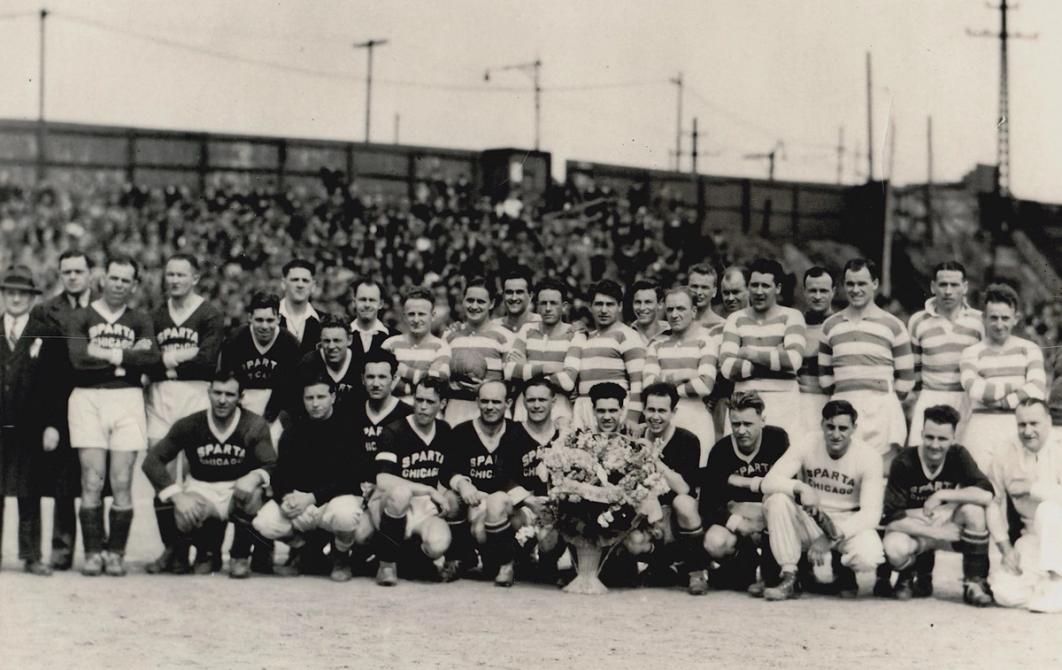

Two goals by the Dutchman gave the Holleys a 2-1 win over Toledo SC and then Visser registered a hat trick in a 4-3 win over the All-Scots. Then the team advanced out of the qualifying round with 1-0 over Solvay AC (Visser again netting the lone goal).
The 175-pound Visser, with his unmissable shock of blond hair, soon showed it wasn’t just in local competition where he could score. He found the net once and got the winner in a 2-1 decision over the Canadian Club of Chicago. In the Second Round, Buda AC of Harvey, Illinois jumped out to a quick two-goal lead, but Visser almost single-handedly booked Holley a place in the Western Semifinal by registering a hat trick in a 3-2 win.
Visser was one of four scorers in a 4-2 win over the Cleveland Hungarians. He then provided two goals in the team’s first game out of the Detroit area, a 2-1 result over Sparta AC of Chicago to advance to the Final. According to the Detroit Free Press, Visser was responsible for scoring 23 of Holley Carburetor’s 32 goals in the competition.
Detroit’s first time hosting an Open Cup Final was a busy day for American soccer. The ASL was playing a full slate of games in New York and New England, the Olympic Champion and soon to be first World Cup champion national team of Uruguay was beating an Ohio All-Star team 3-0 at Luna Field in Cleveland and the All-Jewish Hakoah team of Vienna was playing to a 2-2 draw with the New York Giants in front of a Polo Grounds crowd listed anywhere from 38,000 to 45,000 depending on the newspaper providing the count.
Fall River's Heroes of Old 🤩 | @opencup #TBT
— U.S. Open Cup (@opencup) October 19, 2023
⭐︎ Won 3 straight Open Cups between 1930 & 1932
⭐︎ 1930 as the Fall River Marksmen (MA)
⭐︎ 1931 as the New York Yankees (NY)
⭐︎ 1932 as the New Bedford Whalers (MA)
READ all about all of 'em ✍️» https://t.co/Qre3M3aYdt pic.twitter.com/oc7QDMVhmC
None of that dampened the enthusiasm in the Motor City for a hometown team’s first appearance in the National Challenge Cup/Open Cup Final as 10,000 fans turned out at the University of Detroit Stadium. Unfortunately for the locals, the Fall River Marksmen managed to shut Visser down, and steamrolled to their second title in four years by the lopsided score of 7-0.
It would be more than a decade before a second Detroit team reached an Open Cup Final. That was another was team tied to the auto industry, Chrysler, advancing to the deciding game. Unlike Holley Carburetor, who were relative upstarts in the Detroit market and received little attention until the later stages of qualifying, the Chrysler team was a known quantity, having won the Michigan Amateur League title in 1940 while also advancing to the western Semifinals of the Challenge Cup.
After a scoreless draw with another Detroit-based team, Iosco, to open the 1941 competition Chrysler advanced with a 3-2 win in the replay behind two goals from George Borg. Keyworth Stadium was the site of a 2-0 Second Round win over Delarda of Cleveland.
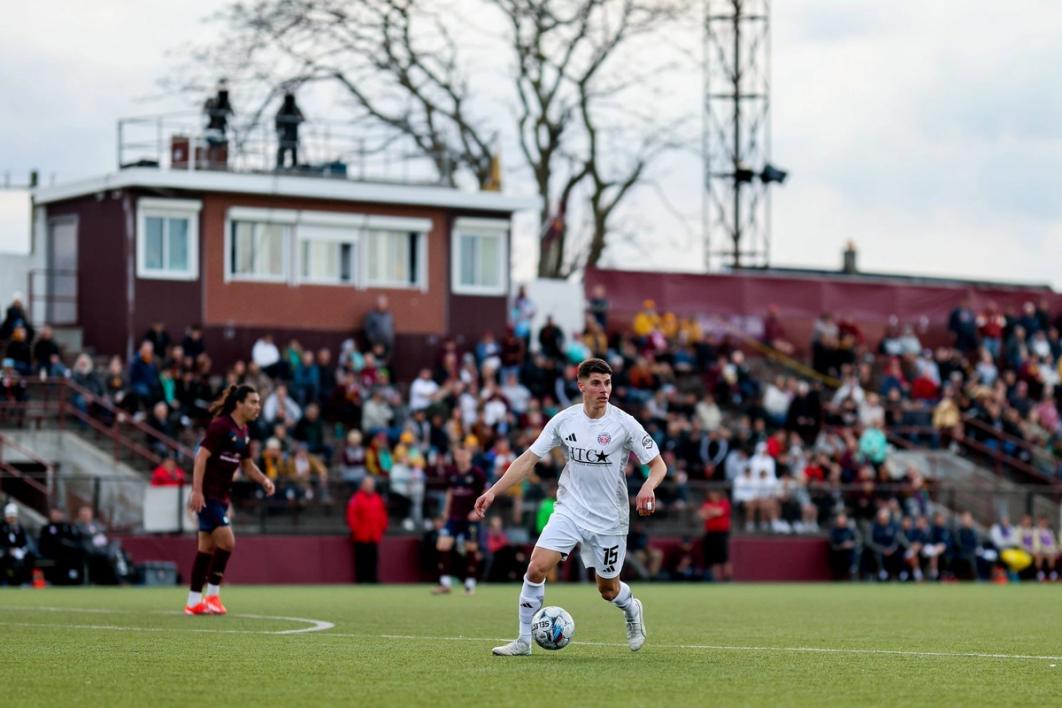

A local derby played in ankle deep mud at Mack Field, the home of the Negro League’s Detroit Stars, had its share of memorable moments. After a scoreless first half, Jim Nelson gave Chrysler a 1-0 lead. But then the Auto Workers went a man down when Aldo Patria was ejected by referee Davis Nelson for throwing mud at the German Hungarians’ Ewald Hillbert.
Shortly thereafter, Chrysler goalkeeper Doug Nelson made a diving save on a penalty kick before being briefly knocked out on the play. He eventually continued and held the shutout for the 1-0 win.
It was almost three months into 1941 before the Third Round was finally played, with Chrysler beating the G.O.P. (yes, the Republican club) of Buffalo 3-2 to advance to the Western Final -- a two-game set in which they beat Gallatin-Dunleavy 3-1 and 2-0.
Today in #USOpenCup history...#OTD 1939: Chrysler SC (#Detroit) shuts out Shamrocks SC (#Cleveland) 3-0 to reach the Quarterfinals. This is the last #USOC game played on #ChristmasEve game that we have on record.
— TheCup.us (@usopencup) December 24, 2021
Photos: Chrysler SC players (@freep) pic.twitter.com/dtk6OsjGlh
Like the Holleys a dozen years before, however, Chrysler couldn’t bring the trophy home.
They lost 4-2 to Pawtucket at Coats Field in the opening game, also losing Nelson to injury. Even so, the championship was within their grasp in the return game at Chrysler Field. The home team took a 3-0 lead, and 5-2 edge in total goals, before the Rangers roared back for a 4-3 win and an 8-5 edge in the series. Just a few weeks later, the Chryslers fell in the final of the Amateur Cup 2-1 to Fall River SC.
While the Carpathian Kickers won the 1962 Amateur Cup, more than 80 years have passed and no Detroit team has come closer than Chrysler to fulfilling Healy’s dream of an Open Cup Champion from the Motor City.
So it’s over to you, Detroit City FC. Unlikely, sure, but history is made to be changed.
Charles Cuttone is a writer/author, historian and co-author of Pelé, His North American Years.